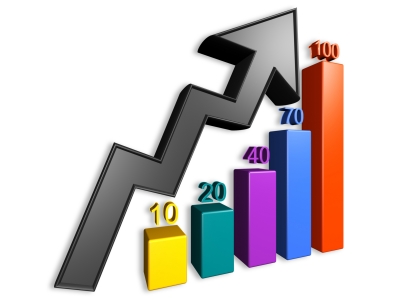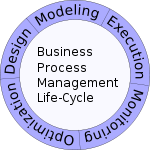
Models are mechanisms for
communication. But each
model shows only a small amount of the totality of information about the artefact; too much information in a model makes it difficult to
comprehend.
Models are typically used when it is either impossible or impractical to create experimental
conditions in which scientists can directly measure outcomes. Direct measurement of outcomes
under controlled conditions will always be more accurate than modeled estimates of outcomes.
When predicting outcomes, models use assumptions, while measurements do not. As the number
of assumptions in a model increases, the accuracy and relevance of the model diminishes. Conceptual
models are used to help us know, understand, or simulate the subject matter
they represent. Conceptual models represent human intentions or semantics. [1]
A model in science is anything used as a representation of an object, law, theory or event used as a tool for understanding the science world. [2] Whereas, a business model describes the rationale of how an organization creates, delivers, and captures value (economic, social, cultural, or other forms of value). The process of business model construction is part of business strategy. Below list of items are topics which are relevant to model:
What is Modeling and Modeling Languages? ⇧
What is modeling?
Modelling (or Abstraction, one of paradigms of
computer science, is about building
representations of things in the "real world" and allowing ideas to be
investigated; it is central to all activities in the process for building or creating an
artefact of some form or other. In effect, a model is a way of expressing a particular
view of an identifiable system of some kind. Scientific modelling is the process of generating abstract,
conceptual, graphical and/or mathematical models.
What is Modeling Language?
A modelling
language (also see) is any artificial language that can be used to express
information or knowledge or systems in a structure that is defined by a consistent set of
rules. The rules are used for interpretation of the meaning of components in the structure.
A modeling language can be graphical or textual. Graphical modeling languages
use a diagram
technique where textual modeling languages typically use
standardized keywords accompanied by parameters to make computer-interpretable expressions.
See:
business process modeling tools
Types of modeling languages
- Graphical modeling languages. In order to define a graphical
modeling language, it is necessary to define the graphical notation of the language in
the process
of metamodeling. Example of graphical modeling languages in the field of
computer science, project management and systems engineering:
Unified Modeling Language (UML): UML, About, 2, UML Diagrams, 1 2, 3, Enterprise Architect UML Tutorial, (• applying UML)
Business Process Model and Notation (BPMN): BPMN, About, PDF, Altova's Enterprise Architect BPMN Models (• applying BPMN)
and other graphical modeling languages: EXPRESS, EEML, ORM, Petri NETs, FMC, LePUS3, Spec. and Desc. Language, ESL-Energy Systems - Textual modeling languages - typically use standardized keywords
accompanied by parameters to make computer-interpretable expressions.
See also: mermaid - Tooling, Software Efficiency, Performance and Code Efficiency, - More specific modeling languages are in the field of computer science like these: Algebraic Modeling Languages (AML), Domain-Specific Modeling Language, Framework-specific Modeling Language, Object Modeling Languages, Virtual Reality Modeling Language
- Other Modeling Languages are: Generative, JavaML , Rebeca, Service , Web Services-WSMO, X3D
Suggested Reading: Applying UML and Patterns, Unified Modeling Languegs, UML, UML distilled, Model Driven Engineering, OO SE with UML Patterns and Java
Applications of ML / Types of Scientific Modeling ⇧
 Applications of Modeling Languages
Applications of Modeling Languages
Modeling languages are used in various fields to create visual or textual representations of
systems,
processes, or data. They are crucial for understanding, designing, and communicating complex
information.
Applications range from software development and systems engineering to enterprise
architecture and data modeling
Many kinds of modeling languages are applied in different
disciplines, including computer science,
information
management,
business process modeling,
software engineering,
and systems
engineering.
Modeling languages can be used to specify:
system requirements, structures and
behaviors.
The more mature modeling languages are precise, consistent
and executable.
Executable
modeling languages applied with proper
tool support, however, are expected to automate system verification, validation, simulation and code generation
from the same representations.
Types of Scientific Modelling [3]
What is Business Law? ⇧
Business can be defined as an organization that provides goods and services to others who want or need them. Many business-related careers, exist in large corporations, in small businesses, non-profit organizations, government agencies, and educational settings. Furthermore, you don't need a degree in business to obtain many of these positions. In short, every sector of our economy needs people with strong overall skills that can be applied to business-type careers. There are a wide variety of career areas that exist in business settings[4]. Some of these include:

- Accounting
- Administrative management
- Business management
- Finance
- Human resources
- Information systems
- Insurance
- Marketing
- Operations management
- Public relations
- Purchasing / merchandising
- Retail management
- Sales
What is Business Law?
Business law
encompasses the law governing contracts, sales, commercial paper, agency and employment law,
business organizations, property, and bailments. Other popular areas include insurance,
wills and estate planning, and consumer and creditor protection. Business law may include
issues such as starting, selling ,or buying a small business, managing a business, dealing
with employees, or dealing with contracts, among others.
Quote of the Day: "Since the market tends to go in the opposite direction of
what the majority of people think, I would say 95% of all these people you hear on TV
shows are giving you their personal opinion. And personal opinions are almost always
worthless . facts and markets are far more reliable." - William J. O'Neil
See also: What
is Business Law?,
What is
Business?,
Business Development,
Business Consulting Articles,
Thinking Maps
Business Process Management - (BPM) ⇧
 BPM
(see also Rule Engines and
Workflow Engines,
Integration Framework) is a
systematic approach to improving an organization's business processes. BPM activities seek
to make business processes more effective, more efficient, and more capable of adapting to
an ever-changing environment. BPM is a subset of
infrastructure
management, the administrative area of concern dealing with maintenance and
optimization of an organization's equipment and core operations.
BPM
(see also Rule Engines and
Workflow Engines,
Integration Framework) is a
systematic approach to improving an organization's business processes. BPM activities seek
to make business processes more effective, more efficient, and more capable of adapting to
an ever-changing environment. BPM is a subset of
infrastructure
management, the administrative area of concern dealing with maintenance and
optimization of an organization's equipment and core operations.
A business
process is a set of coordinated tasks and activities, conducted by both people and
equipment, that will lead to accomplishing a specific organizational goal. The Business
Process Management Initiative (BPMI), a non-profit organization, exists to promote the
standardization of common business processes, as a means of furthering e-business and
business-to-business (B2B) development. To this end, the organization has developed the
Business Process Modeling Language (BPML), an XML-based metalanguage for modeling
business processes[5].
BPM (Business Process Management) is a set of technologies and standards for the modeling, execution, monitoring, optimization and design of business processes. Confusingly, the acronym BPM can mean different things, some closely related to Business Process Modelling.
See also: • Business Framework • Business Model • Business Architecture • Business Framework Engineering • Microsoft Business Framework
Business Process Modeling (BPM), Modeling and Design Tools ⇧
What Is Business Process Modeling?
A Business Process Model (BPM) is commonly a diagram representing a sequence of
activities . It typically shows events, actions and links or connection points,
in the sequence from end to end. BPM is typically performed by business
analysts and managers who are seeking to improve process efficiency and
quality.
Business process modeling tools
Business process modeling tools provide business users with the ability to model their business processes, implement and execute those models, and refine the models based on as-executed data. As a result, it can provide transparency into business processes, as well as the centralization of corporate business process models and execution metrics.
- Modeling
and simulation (article) - functionality allows for pre-execution what-if
via one of below two approaches.
- Business process modeling diagrams: Use case diagram integrated in the UML and Activity diagram - for showing workflows.
- Some business process modeling techniques: BPMN, EPC, UML, xBML, IDEF0
-
Programming
languages (BPML) tools for BPM
- provides programming interfaces (web
services, APIs) which
allow enterprise applications to be built to leverage the BPM engine.
- Programming languages that are being introduced for BPM: BPEL, WS-CDL, XPDL, ARIS (detailed information for ARIS)
Other technologies related to business process modeling include model-driven architecture (MDA) and service-oriented architecture (SOA).
Suggested Reading: Models and Modeling, Business Intelligence, OLAP / OLTP and etc., Essential BPM, Business process management
Modeling & Design Tools for your Enterprise: (see also, another BPM tool Tibco Business Works)
Other Tools: Java Toolkit • API's • Programmer's Corner • WebDev. Tools • Database Tools • Modeling & Design • Multimedia (AI Tools) • Maths and Science